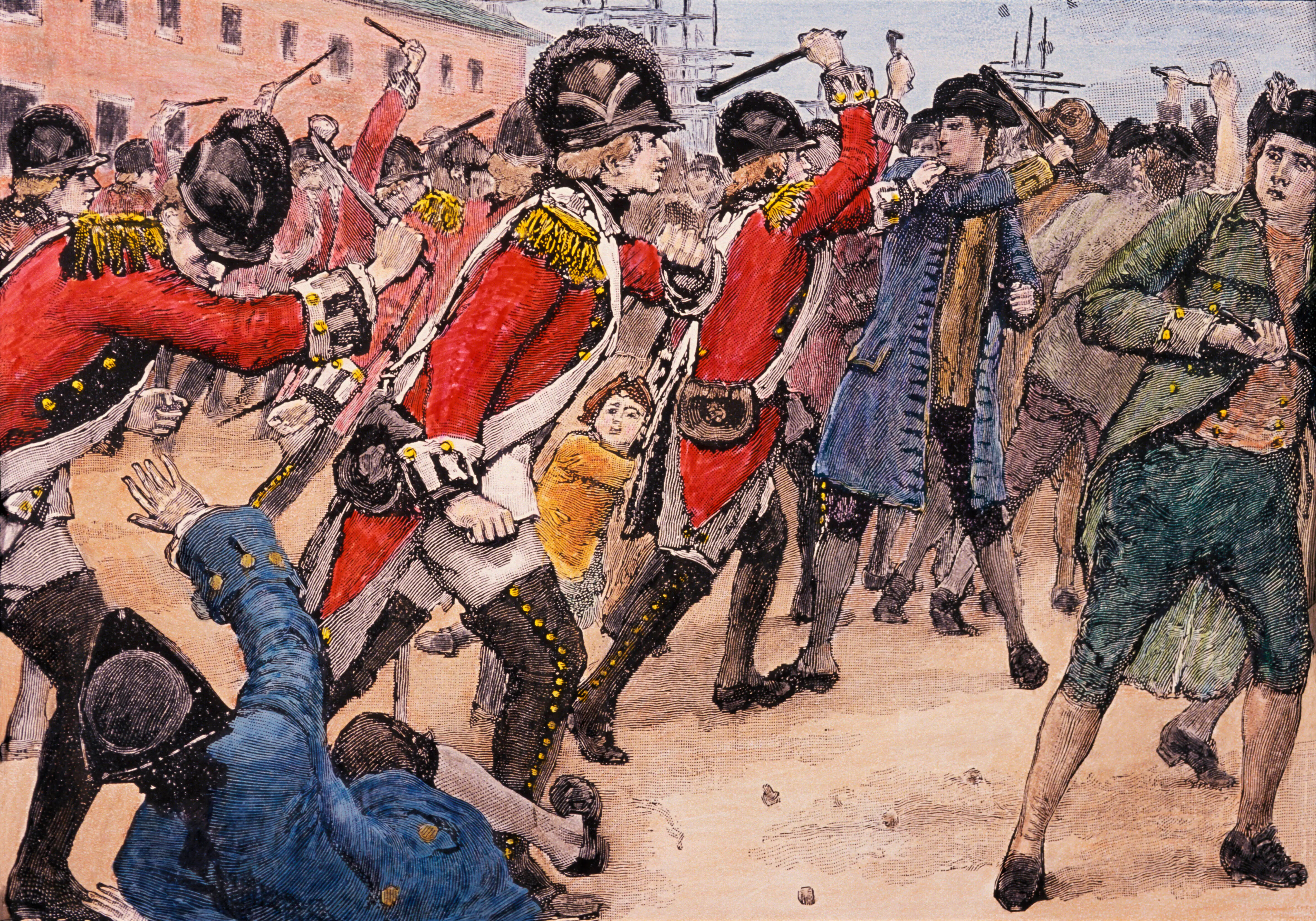The American Revolution season 1 episode 3 ending explained: How did the British troops devastate the Americans between 1776 and 1777?
-
 Illustration depicts British soldiers as they clash with an angry crowd during the Boston Massacre, Boston, Massachusetts, March 5, 1770. (Photo by Stock Montage/Getty Images)
Illustration depicts British soldiers as they clash with an angry crowd during the Boston Massacre, Boston, Massachusetts, March 5, 1770. (Photo by Stock Montage/Getty Images)The American Revolution season 1 episode 3 traces back the events of 1776–1777. It shows how plans to build a peaceful, educated nation were suddenly interrupted by war. The country’s safety was compromised, and fear took over. The episode explains how different battles started as both sides fought for control of the land. While the British wanted power, the Americans primarily fought for their independence. During this time, many lives were ruined. Cities were destroyed, families were torn apart, but the people’s desire for freedom stayed strong.
The bay was crowded with ships; it looked as if all of London was floating on the water. As the threat of war grew, many officers’ wives, including Martha Washington and Lucy Knox with her child, were sent away from the city for their safety.
By 1776, the Revolution that had begun as a disagreement over the rights of British subjects had turned into a full war for American independence. As this idea spread through the colonies, many families were forced to leave their homes.
The documentary also shares personal stories from some of the first refugees, explaining how they had to keep moving from place to place, searching for a safe place to settle. Among them, one was Betsy Amber, whose mom was in a worse condition during the movement, and when she gave birth to another daughter, Betsy’s father called her ”the only independent child,” as she made an appearance just right after the declaration.
How British troops targeted New York and other parts of America, explained in The American Revolution season 1 episode 3
New York City is surrounded by deep water, and at that time, people believed that whoever controlled the sea would control the city. General Washington told General Charles Lee to strengthen the defenses of New York and the areas around it. Because the Americans did not know where the British would attack, they spread their soldiers across multiple locations. About 121 cannons were placed around the harbor.
New York is an archipelago, encircled by deep water, so the soldiers needed strong naval support; without it, they could not properly defend the city. After the war, the town, which once had a population of 25,000, was reduced to only about 5,000. It felt as if the whole city had been wiped off the map.
On August 1, 1776, 40 enemy ships arrived to join the British fleet in South Carolina. These ships were coming from a failed British mission. The British warships gathered at Charleston Harbor. Around 111 British crew members died, and several ships were badly damaged. It took almost three days to repair them before they could move on and join the forces threatening New York.
In the summer of 1776, Cherokee warriors began attacking frontier settlements west of the Appalachian Mountains. The British had asked their Cherokee allies to wait until British troops could join them, but the Cherokees started fighting on their own. North Carolina, South Carolina, and Virginia all prepared to fight, expecting the British, but instead, they faced the Cherokee attacks. The Americans then destroyed 36 Cherokee towns, although the Cherokee leader Dragging Canoe managed to escape.
The Royal Government declared martial law, and 135 people were put on trial. Out of them, 17 were executed, 11 were beaten to death, and 45 were taken away from their families and deported to other islands.
On September 11, 1776, three delegates from the Continental Congress — John Adams from Massachusetts, Edward Rutledge from South Carolina, and Benjamin Franklin from Pennsylvania — met with a loyalist on Staten Island to speak with Admiral Howe and try to make peace. But the meeting ended without any agreement. The British said the only way to stop the war was for America to relinquish its independence, leaving Americans with only one choice: to continue fighting.
On September 21, 1776, New York was set ablaze, and the whole city was in flames. George Washington and General Howe finally came face-to-face during this crisis. At the same time, the Continental Congress was working diligently to create the Articles of Confederation, which aimed to unite the 13 states while preserving each state’s independence.
But the states often saw each other as enemies, and bringing them together was almost as challenging as gaining independence from Britain. Meanwhile, Pennsylvania approved its new constitution, and debates over the weaknesses of the Articles of Confederation grew louder.
On November 20, 1776, 5,000 British and Hessian troops crossed the Hudson River and climbed the slippery 440-foot cliffs of New Jersey. On November 30, they issued a proclamation saying they wanted to restore British rule in New Jersey. But the British and Hessian soldiers attacked civilians, and women and children were targeted, harassed, and even raped. Because of this, New Jersey militiamen picked up their weapons again, not only for the Revolution but to protect their families.
During one battle, 22 Hessians were killed on the freezing ground, 83 were wounded, and 900 were captured. Only two Americans died, and five were injured. The Americans chose to treat the German prisoners well because they believed the Hessians were also victims, forced or sold by their rulers to fight in a war that had nothing to do with them. By the new year of 1777, John Greenwood left his duties as a colonel, but The American Revolution kept moving forward.
TOPICS: The American Revolution